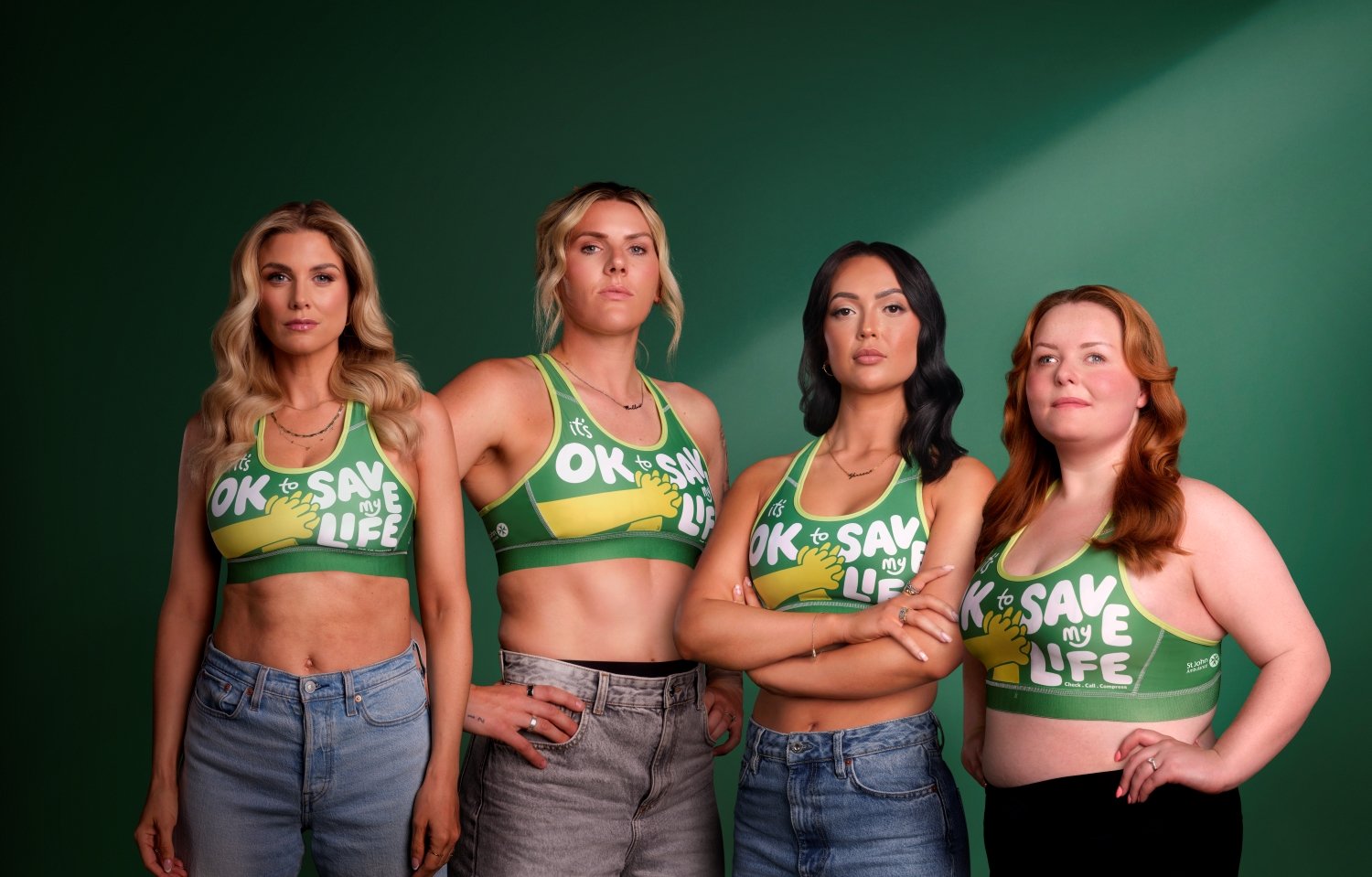Help us save more women’s lives
We’ve launched the CPR Bra campaign which aims to save lives by busting the taboo around chest compressions and touching breasts.
Our research shows one in three people are afraid to give CPR to a woman in public because they are worried about touching breasts.
This has got to change!
We've created the world’s first educational bra - the CPR Bra - which is designed to close the gender survival gap and reassure people that taking fast action is the right thing to do to save a life regardless of gender. It features the message ‘It’s OK to Save My Life’ on the front, along with a reminder of the steps needed to respond to a cardiac arrest, as every second counts.

'From left to right - Ashley James, Millie Bright, Sharon Gaffka and Lucy Edwards'
With the help of some familiar faces, we aim to bust this taboo and save more lives.
Together, we’re reassuring people that it’s ok to touch part of someone’s breasts to give CPR when in cardiac arrest – or even cut their bra or binding off to use a defibrillator because you are trying to save their life.
We believe every ‘body’ who has a cardiac arrest should be given the best chance of survival regardless of gender.













